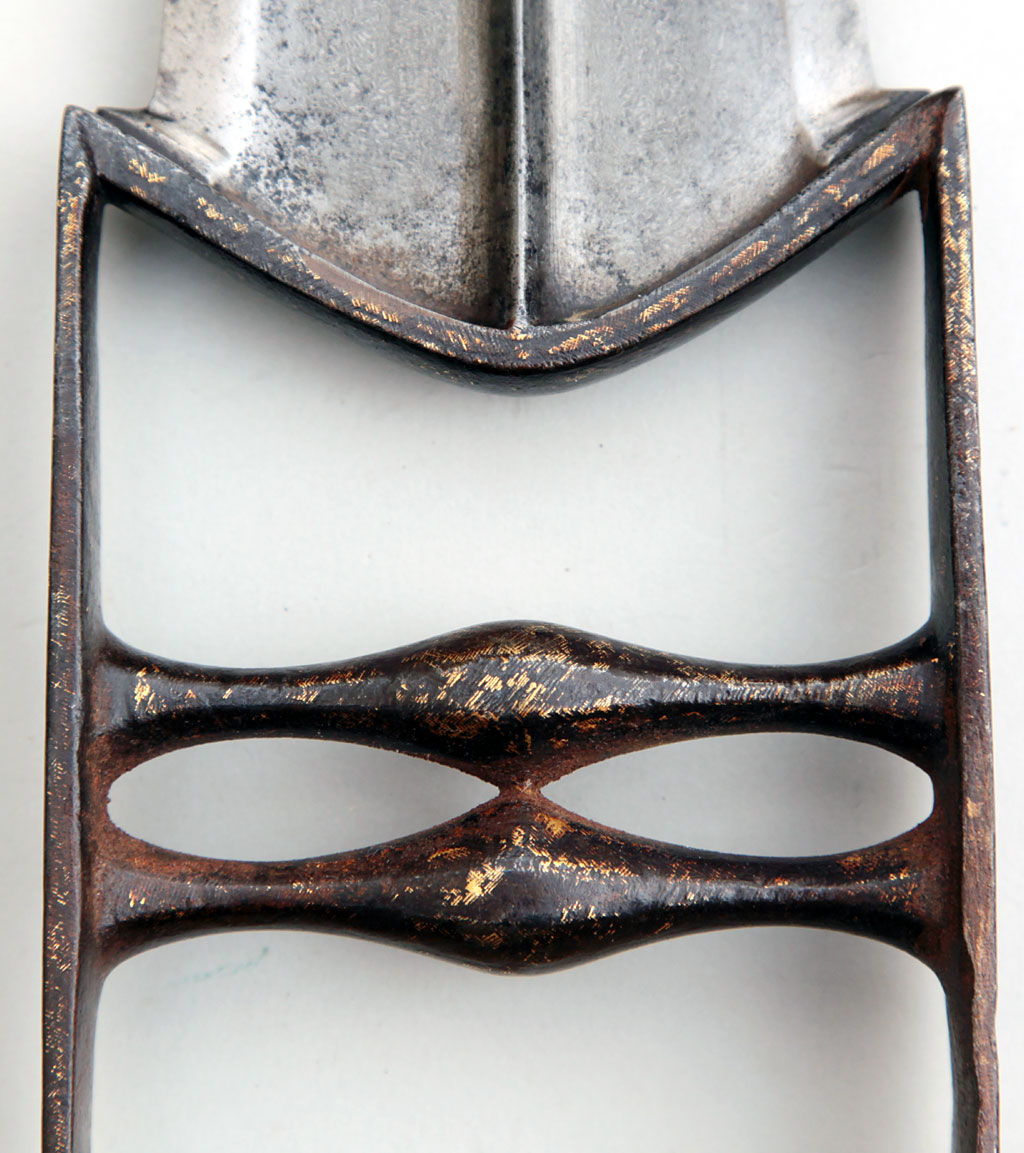
This is a fine example of a jamadhar ('death tooth') dagger, better though perhaps incorrectly known as a katar; a style of dagger limited to the Indian Subcontinent. This example is typical in its overall form, having a straight double edged blade abruptly arising from a curved cross piece (hilt base) to which are attached hand and wrist guards parallel to the blade on either side and a grip formed by a pair of cross bars that are focally joined at their center. Most of the hilt elements show residual traces of gold koftgari, however there appears to be an old weld on one of the guards just beyond the grip and an absence of remaining decoration beyond this area suggests that the extension may be a replacement. The 7¾ inch (19.7 cm) blade of this example proximally has a sharply defined high central mid rib on each face flanked on each side by a deep fuller; immediately beyond the fullers the blade reaches a maximum thickness of 0.42 inch (1.06 cm) for an armor piercing tip that takes on a flattened diamond cross section. Most noticeable within the flats of the fullers is a bold high contrast wootz grain indicative of very restrained forging and creation of the bold mid rib and fuller topography by chiseling (stock removal). A very few patches of minor superficial discoloration and pitting are present. Overall length is 14.3 inches (36.6 cm) with a weight of 18¾ ounces (535 grams).







